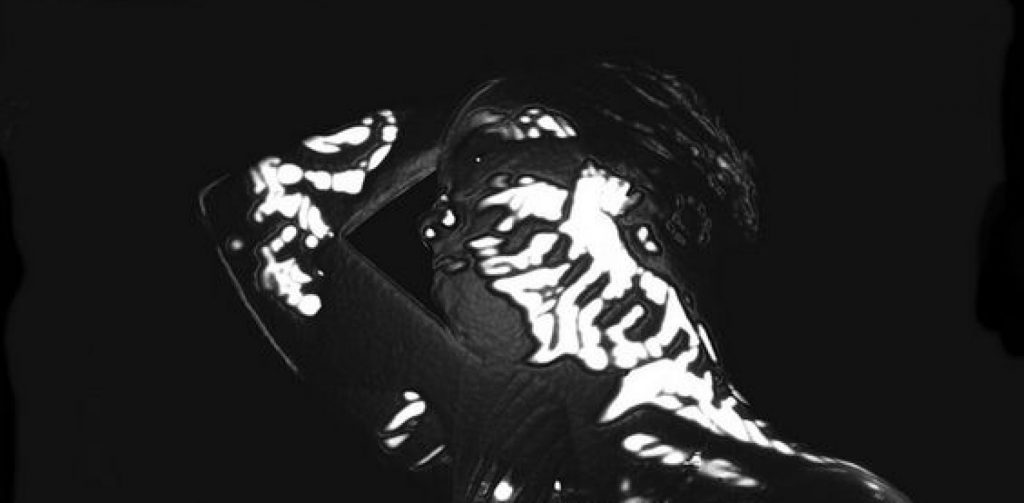My proposal was selected and will be located in Gallery 1, which is the exact room I wanted. I’m so excited that my work was chosen, and I feel that through my development of the idea the simplification benefitted me as there isn’t too much going on.
For the sound, I recorded an hour and a half loop on my synth using Ableton, and put this on USB stick for use with a Raspberry Pi. Even though the sound is not actually never-ending, it will have the same effect as no one will notice the loop starting and ending because it is so long. I would have had to actually have my synth physically in the room which would have complicated matters too much if I wanted the sound to be genuinely infinite.
I arrived at the space with four days to install everything and setup up each element so that it would run smoothly. I began to get a little nervous initially as it began to sink in that I am actually doing a gallery installation for real, as this is the first time I’ve ever done something like this. I am going to include some bullet points with photos explaining the process of installing the piece.
- Got familiar with the space and thought about the best way to set everything up
- Hoovered the floor removing any dust, random rubbish etc.
- Shifted the layout of the work around, so that the projector would be projecting onto a different wall than outlined in my proposal
- Figured out where everything should go e.g. the oscilloscope in the corner and close to the projector

- Thought about possibly adding another element, beanbags, to invite people to sit down and get lost in the experience, but then decided against it at it could crowd the room
- Began to attempt to get the oscilloscope working in the way I wanted it to, firstly by routing my laptop through an interface and then routing the interface into the oscilloscope
- Wasn’t seeming to work

- Tried to change the voltage and volume of the input which worked to an extent but still wasn’t creating the complex lissajous patterns I was looking for
- Added an amplifier that the interface ran through before the audio got to the oscilloscope, which worked perfectly as I was able to boost the gain and the voltage, I’m still not entirely sure how this works but the main thing is I figured it out
- Ran a stereo 1/4 inch jack to dual XLR from the amplifier to the speakers, which meant I could hear the sound and see the image on the oscilloscope at the same time

- Updated the setup, switching out my laptop for a Raspberry Pi and plugging in a USB with the sound on it
- Roughly positioned the camera and connected it to the projector via a HDMI

- Things to do written on post-it notes to stay organised
- Was originally going to install the projector on the wall but decided against it because it was too much work and patience to try and drill into the wall
- Wanted to hide the oscilloscope and other tech but decided to leave it out for people to see and make sure it wasn’t a trip hazard
- Ran the XLR cables to the speakers and tidied them up, running them along the floor next to the walls and fastening them in with hooks, nails and a hammer – this was to avoid any cable build up and keep everything looking good
- Got the projector set up and angled properly
https://drive.google.com/file/d/1-XWFV0yKbgnvfJvxWS-S0k1Tpskf3cLq/view?usp=sharing
- Video shows the full setup working, I then blacked out the room by nailing a black cloth of fabric over the window
https://drive.google.com/file/d/1B9jkFrhd_sH-S_cK-uR2B4R1OxkJolV_/view?usp=sharing
- Video of the final setup, with the oscilloscope being projected onto the wall and the room blacked out
FINAL THOUGHTS
I will reflect in more depth in my reflective writing, however I am very proud of myself for having a rough idea, developing it into a concrete concept and realising it in a short space of time. I am very excited and grateful for the opportunity to show my work to the public in a space like this. Everything looked and sounded exactly as I had envisioned, but the one thing that let it down was that my camera doesn’t stay on video view for longer than 30 minutes. This means that I will have to keep turning it on every half hour, which is frustrating because it takes away the magic of the work and means I will need to tell people to keep turning it on.
Overall though, this has been the most enjoyable and productive unit I have done on the course so far, and I am extremely proud of myself for creating something that I feel is really unique.
